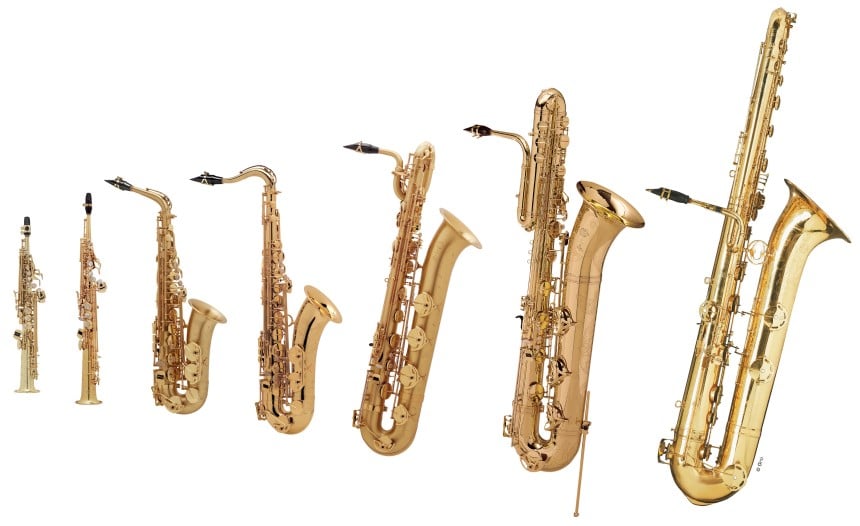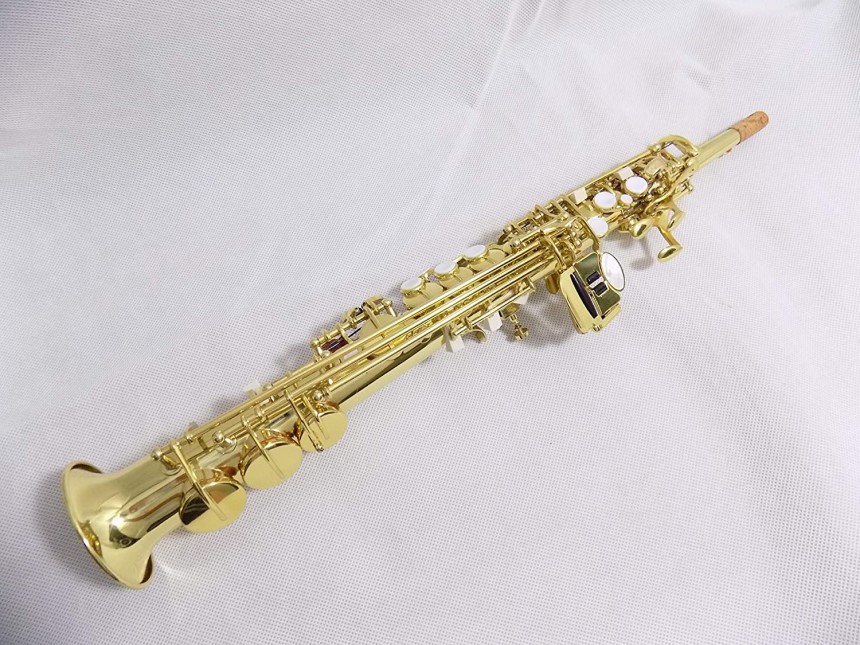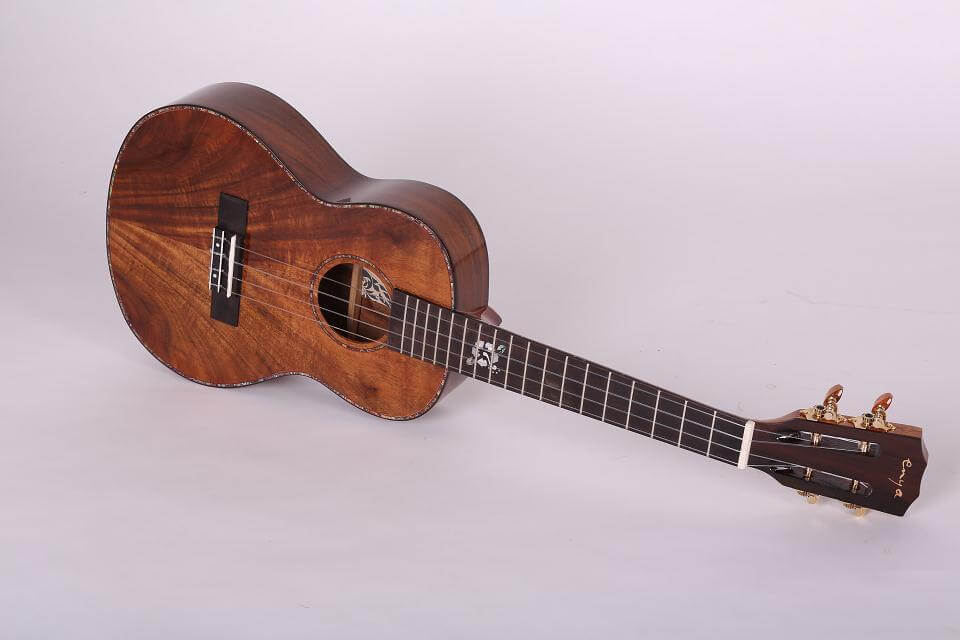A saxophone is a popular instrument to learn, it has a powerful, jazzy sound which can also be used in a variety of popular music genres. Famous sax songs include George Michael’s “Careless Whisper” and Gerry Rafferty’s “Baker Street”. Sade’s “Smooth Operator” is another hit, which hinges on the use of the saxophone. In some songs, it is nothing short of iconic.
The saxophone (or sax) is not just one instrument, it is a subsection of woodwind instruments made from brass. That’s why in this guide we’re exploring the different types of saxophone to explain what makes up the sax “family”. They all tend to have a single-reed mouthpiece and have some other common ground, but there are differences in size, and crucially, in tone.
If you’re looking to buy a saxophone, it can be intimidating looking at all of these different styles and varieties and wondering which is for you. Our guide to all kinds of saxophones should help.

How many types of saxophones are there? 14 in total! 4 are currently used regularly in mainstream music, but you can find the others in use, too.
This is one of the key distinctions to make when it comes to the different types of saxophone on the market. Some trained ears could listen to a type of sax such as a tenor saxophone and instantly know what style it is.
The sound varies hugely depending on the size of the instrument. Most saxophones are conical in their shape. This means they have a larger resonant area and this provides them with the signature sound we expect, and plenty of loudness and brightness.
As well as the tonal qualities that differ based on the size and design of the saxophones, they are actually tuned differently. Some saxophones are tuned to Bb while some are tuned to Eb. This means there is some variation in the way they are played, too.
Deeper models such as the baritone sax sound similar to a lower brass instrument like the trombone.
The body types look a little different, too. There are types of soprano saxophones that are very small and don’t have the same bell curve that a lot of the other sax models offer. This is a way to create the higher frequency sound, at a higher octave, we associate with soprano.
As saxophones get deeper and louder they tend to get bigger. A baritone saxophone has a deep design with a much longer “bell” section. This helps to generate a deeper tone.
The level refers to who is going to be playing the instrument. For instance, there are “student” models of saxophone as opposed to “professional”. This categorization is not something you see in every type of instrument, but it makes sense. Student models are designed for beginners, and though the designs are quality there are some vital differences when it comes to the build.
The body of the horn tends to be thinner for a student model, along with the quality of things like springs and rods that are important parts of your sax. These might be far lower in a student model when compared to a pro tenor sax, for example.
A good analogy is to compare a more budget car with an expensive model. It may be able to do a bit less than the pro model, but it still gets you from A to B. Plus, more importantly, you can learn how to drive even with a cheaper car. You can learn how to play the saxophone even on an affordable student model.

The saxophone is called a woodwind instrument because of their use of a reed. This is different to a brass mouthpiece that would categorize them as a brass instrument. Sax manufacturers use a lot of different metals to make them, but brass is the most common. Saxophones have 20-23 different openings and keys. These control the pitch. The mouthpiece is usually made out of plastic, and this is the same no matter what the sax size.
The sound is generated largely via the reed and the way that this interacts with the body of the sax. This means that the vast majority of saxophones have at least some similarities. However, because they cover different octaves and come in different sizes, there is a lot to be explained about the types of saxophone.
Time to explore the main types of saxophone. As we’ve mentioned already, there are 14 types in total, but only a few of these are played regularly. If you are putting together a huge brass orchestra you might find some of the varieties, but they don’t tend to be the right starting point for those learning how to play sax. The main types are more common and readily available.
The sort of saxophones you hear doing a solo on a rock or jazz record probably fall into these categories. The terms come from musical “ranges” covering different octaves. For example, you might hear terms like “tenor” used to describe someone’s voice (like the Three Tenors). They’re a way to organize instruments based on pitch, too, and this includes the beloved sax.

The tenor sound is what most people hear when they imagine a saxophone sound. It’s the type that has penetrated the mainstream the most. For example, a lot of pop records with sax solos use this type.
Because the tenor sax is so popular, there are many different models to choose between if you are looking to buy one.

It is pitched in Eb, and is pretty easy for learning. It doesn’t require quite as much lung power as the tenor saxophone and you can start to generate a good sound within a matter of a few lessons.
Like the tenor saxophone, there are different types of alto saxophones, such as student and professional models. Consider what stage of your journey you have reached before making any purchase. You might just want something that is simple and affordable rather than spending a lot of money on a professional model only to never play it!

This is another variety pitched to Eb. Because they are large instruments they need a huge level of air to be pushed through to produce powerful notes. This means that a lot of people struggle to play the baritone saxophone.
If you’re a beginner, this is not the recommended starting point. As well as being difficult, baritone saxophones are expensive to buy.
That said, it’s easy to see why they are so effective for choirs and the like. They have an incredible low-end rumble.

Soprano models are smaller and even look different as they don’t have the same bell section as other large saxophone types, like tenor or even baritone.


This tends to happen with a lot of instruments. Some people like to specialize and play something a little more unusual. Sizings of saxophones are quite similar to ukuleles, and ukes also have a lot of varieties, such as tenor, soprano, and even the guitalele – a cross between uke and guitar.
Learning how to play any instrument can be really intimidating. There are a lot of different terms to get used to, and with something like the saxophone, there are even a lot of different varieties. By explaining the types of saxophones, we hope to have helped you to work out exactly what you will be looking for when you are shopping for the instrument, and what sort of sound you can expect from each variety of sax
.





